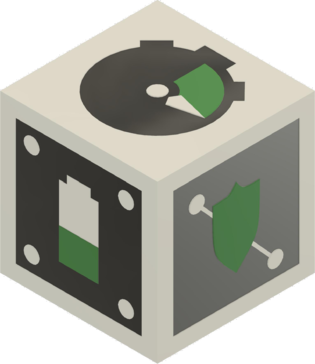Difference between revisions of "Main Page"
| Line 9: | Line 9: | ||
|[[File:empty.png|left|45px]] | |[[File:empty.png|left|45px]] | ||
|[[File:Logo_dcube.png|315px|right]] | |[[File:Logo_dcube.png|315px|right]] | ||
| − | | | + | |} |
To this end, D-Cube allows developers to test and optimize their solutions for one or more [[Suites overview|benchmarking suites]] (i.e., for specific application scenarios and hardware platforms) and to provide a binary that is perpetually tested in a best-effort fashion to accurately profile its performance. Such quantitative performance measurements are publicly available and serve as a reference for academics and companies alike. | To this end, D-Cube allows developers to test and optimize their solutions for one or more [[Suites overview|benchmarking suites]] (i.e., for specific application scenarios and hardware platforms) and to provide a binary that is perpetually tested in a best-effort fashion to accurately profile its performance. Such quantitative performance measurements are publicly available and serve as a reference for academics and companies alike. | ||
| − | + | ||
D-Cube currently supports two [[Supported platforms|popular hardware platforms]]: the TelosB (Tmote Sky) mote and the Nordic Semiconductors nRF52840. Hence, D-Cube enables the benchmarking of solutions based on IEEE 802.15.4 and Bluetooth Low Energy technology. | D-Cube currently supports two [[Supported platforms|popular hardware platforms]]: the TelosB (Tmote Sky) mote and the Nordic Semiconductors nRF52840. Hence, D-Cube enables the benchmarking of solutions based on IEEE 802.15.4 and Bluetooth Low Energy technology. | ||
With [[testbed nodes|more than 50 nodes]] and the ability to [[testbed capabilities|generate harsh RF conditions]], D-Cube allows also to test the performance of mesh networking and multi-hop solutions in the presence of radio interference. | With [[testbed nodes|more than 50 nodes]] and the ability to [[testbed capabilities|generate harsh RF conditions]], D-Cube allows also to test the performance of mesh networking and multi-hop solutions in the presence of radio interference. | ||
Revision as of 22:12, 9 November 2019
D-Cube: A Low-Power Wireless Networking Benchmark
| D-Cube is a full-fledged benchmarking infrastructure that provides a consistent way to evaluate the performance of low-power wireless systems.
Hosted at Graz University of Technology, D-Cube supports the automated testing of the reliability, timeliness, and energy consumption of low-power wireless communication protocols in a variety of settings. The primary audience of D-Cube are academic researchers and industry practitioners creating low-power wireless networking solutions that would like to quantitatively assess and compare their performance with that of other systems addressing the same class of applications. |
To this end, D-Cube allows developers to test and optimize their solutions for one or more benchmarking suites (i.e., for specific application scenarios and hardware platforms) and to provide a binary that is perpetually tested in a best-effort fashion to accurately profile its performance. Such quantitative performance measurements are publicly available and serve as a reference for academics and companies alike.
D-Cube currently supports two popular hardware platforms: the TelosB (Tmote Sky) mote and the Nordic Semiconductors nRF52840. Hence, D-Cube enables the benchmarking of solutions based on IEEE 802.15.4 and Bluetooth Low Energy technology. With more than 50 nodes and the ability to generate harsh RF conditions, D-Cube allows also to test the performance of mesh networking and multi-hop solutions in the presence of radio interference.
Supported by:
Page Under Construction
Content will follow soon. Link to old main testbed page




